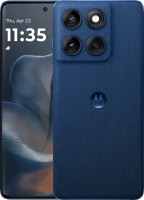What tests are included in MIL-STD-810? Testing features
We independently test the products and technologies that we recommend.

The precursor to MIL-STD-810, AAF Specification 41065, originated in 1945 from the US Air Force to guide testing of equipment in challenging environments. The MIL-STD-810 standard, introduced in 1962, set protection levels for electrical equipment and gained approval for use across all US Department of Defense divisions. The rigorous testing stemmed from stress tests on devices supplied to the US Army, leading to stringent requirements for the equipment under examination.
MIL-STD-810 and its specifications cover the most extensive set of environmental tests available. Originally developed for the needs of the defense industry, standardization has become popular in commercial activities. Over the years of its existence, MIL-STD-810 has undergone a number of changes, and each new version of the standard is indicated by a letter of the Latin alphabet at the end — the further the letter in the alphabet, the more modern the version of the certificate:
- MIL-STD-810 — approved in 1962;
- MIL-STD-810A — 1964;
- MIL-STD-810B — 1967;
- MIL-STD-810C — 1975;
- MIL-STD-810D — 1983;
- MIL-STD-810E — 1989;
- MIL-STD-810F — 2000;
- MIL-STD-810G — 2008;
- MIL-STD-810H — 2019.
Currently, tests of electronic devices for compliance with the requirements of the MIL-STD-810 standard are carried out according to the last two specifications — G or H. For each type of test, a detailed testing methodology is prescribed so that the results obtained are as close as possible to real-world conditions.
Test methods
The total number of tests mentioned in the MIL-STD-810 standard reaches 29:
- 1. 500.6 — Low pressure (altitude).
- 2. 501.6 — High temperature.
- 3. 502.6 — Low temperature.
- 4. 503.6 — Temperature shock.
- 5. 504.2 — Contamination by fluids.
- 6. 505.6 — Solar radiation (sunshine).
- 7. 506.6 — Rain.
- 8. 507.6 — Humidity.
- 9. 508.7 — Fungus.
- 10. 509.6 — Salt fog.
- 11. 510.6 — Sand and dust.
- 12. 511.6 — Explosive atmosphere.
- 13. 512.6 — Immersion.
- 14. 513.7 — Acceleration.
- 15. 514.7 — Vibration.
- 16. 515.7 — Acoustic noise.
- 17. 516.6 — Shock.
- 18. 517.2 — Pyroshock.
- 19. 518.2 — Acidic Atmosphere.
- 20. 519.7 — Gunfire Shock.
- 21. 520.4 — Temperature, humidity, vibration and altitude.
- 22. 521.4 — Icing/Freezing rain.
- 23. 522.2 — Ballistic shock.
- 24. 523.4 — Vibro-Acoustic and temperature.
- 25. 524.1 — Freeze and thaw.
- 26. 525.1 — Time waveform replication.
- 27. 526.1 — Rail impacts.
- 28. 527.1 — Multi-Exciter.
- 29. 528.1 — Mechanical vibrations of shipboard equipment.
 |
| Tests of electronic devices for compliance with the MIL-STD-810 standard are often carried out in specially equipped laboratories. |
From this extensive list, consumer electronics manufacturers are often limited to testing gadgets on only a few key points.
On what points are gadgets most often tested?
Perhaps the most common tests are carried out using method 516.6 — mechanical shocks. During the shock resistance test, the device must be guaranteed to withstand 26 drops at different angles from a height of about 1.2 m. In the G standard version, the gadget is dropped onto a sheet of plywood located on concrete. Specification H has stricter requirements — devices are deliberately dropped onto an inch-thick steel plate, which also lies on a concrete floor. Separate paragraphs may address dropping the device from a truck, helicopter, when unloading a ship, and when being dropped by parachute (landing). The device must be checked for damage after each landing.
 |
| This is what testing equipment looks like, which helps simulate tests for the mechanical strength of electronic gadgets when dropped on hard surfaces. |
Sections 501.6 and 502.6 test gadgets to withstand high and low temperatures. As part of such tests, three separate experiments are supposed to be performed:
- storage at temperatures from -51 °C to +75 °C — the gadget is in the off state, and after turning it on it should perform its functions properly;
- use at temperatures from -20 °C to +60 °C — the device must perform properly in its operating condition and be able to cope with all assigned functions;
- storage in extreme conditions (with short-term deviations from -51 °C to +75 °C) — the test is carried out in a short-term mode and checks whether conditions have returned to normal, which the device must cope with.
Test devices are tested for leaks according to methodology 512.6 — they are placed in a chamber with a humidity level of up to 95% at a temperature from +23 °C to +60 °C. The test is carried out for 48 hours and repeated 10 times — the inside of the case must remain dry or moisture must not affect the operation of the product in any way. The effect of rain is checked in a similar way — during the test, 10 liters of water are poured onto the device under pressure for one hour and the procedure is repeated 4 times in a row. The result should be the same — maintaining full functionality.
 |
| One of the testing methodologies according to the MIL-STD-810 standard is to test the devices for leaks. |
A little less often, gadgets are subjected to vibration resistance testing according to paragraphs 514.7 or 527.1 — they determine the ability of the device to withstand constant vibration effects (especially if the product is installed and used in a vehicle). Constant vibration and vibration effects along different axes affect the operation of the processor and other internal components of the device and can lead to system failure.
The level of durability of devices is determined by their resistance to pollutants (dust and humidity) and other adverse environmental factors: fog, salt, solar radiation, etc. But there are often pitfalls associated with the 511.6 explosion test — to pass it, the device is placed in a chamber where any spark causes an explosion. Of course, the vast majority of electronic gadgets can safely withstand this test. And it may turn out to be the only tested parameter to obtain the coveted MIL-STD-810 badge.
Why are manufacturers often silent about specific MIL-STD-810 tests?
In the consumer electronics realm, the acquisition of MIL-STD-810 certification lacks strict regulation. Consequently, manufacturers often opt for minimal testing, employing just one or two methods — typically simpler ones like exposure to extreme temperatures or assessing explosion risks, omitting crucial aspects like drop resistance or waterproofing. Despite these, devices still receive the MIL-STD-810 mark.
 |
| Having a MIL-STD-810 certificate does not mean that we have an indestructible device. It is important to understand exactly what methods were used to test it. |
Manufacturers often intentionally withhold details about specific MIL-STD-810 tests, absolving themselves of responsibility for potential device damage, and leaving consumers in the dark about the extent of protection. It's crucial for consumers to know the specific tests conducted and their methodology when selecting a gadget with MIL-STD-810 certification. Differentiating between in-house tests and those conducted by independent laboratories is essential. Reliable information about these tests should be readily available in the product instructions or on the official manufacturer's website.
How does MIL-STD-810 relate to IP protection standards?
When it comes to dust and moisture protection for electronic devices, the industry commonly employs the Ingress Protection (IP) standard. Introduced by the International Electrotechnical Commission, it is denoted by two numbers following the IP prefix. The first number signifies protection against dust and microparticles, while the second indicates defense against liquid penetration. A higher numerical value reflects a superior level of protection.
 |
| MIL-STD-810 certification is often combined with IP67 and IP68 protection standards. |
The presence of dust and moisture protection in the device according to standards like IP67 and IP68 automatically entails compliance with a series of tests according to MIL-STD-810. Typically these methods are 506.6 Rain, 507.6 Humidity, 509.6 Salt Fog, 510.6 Sand and Dust. Careless vendors can assign MIL-STD-810 certification to a product based solely on the IP protection standard. But the device will not have shockproof properties or any other anti-vandal qualities.
Having a MIL-STD-810 certificate doesn't automatically mean the manufacturer is obligated to replace or repair a device damaged by a fall or water exposure. It's crucial to scrutinize the specific tests conducted and the testing entity. While the MIL-STD-810 label suggests enhanced reliability, it's most meaningful when backed by thorough testing in independent laboratories. The more comprehensive the testing methods, the better the likelihood of obtaining a genuinely secure gadget designed for challenging conditions.
Articles, reviews, useful tips
All materials
























































